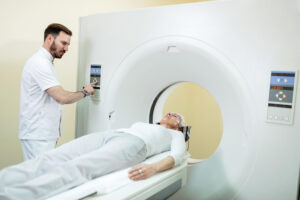Multiple Sclerosis Early Symptoms and Signs
Multiple sclerosis (MS) is classified as a lifelong disease. It impacts the central nervous system and impedes communication between the brain and the body. The mistaken attack of the immune system causes this by inflating protective layers and destroying the nerve fibers. When communication gets increasingly obstructed, the individual becomes hindered by mobility and cognitive impairments.
Recognizing symptoms early can help change the long-term outcome. Unfortunately, there is no cure; however, properly determining a diagnosis with necessary interventions will be helpful in slowing the disease, reducing flare-ups, and maintaining the patient’s condition. Disabling conditions like MS often have mild, easy-to-miss early symptoms, which can be brushed off as symptoms from other medical conditions. However, once again, knowing the early warning signs makes a significant impact on the quality of life as treatment can be sought proactively.
Multiple Sclerosis Early Symptoms
Recognizing multiple sclerosis early symptoms is crucial for timely diagnosis and intervention. They often emerge sporadically alongside other issues, which makes them easy to ignore entirely. However, understanding these warning signals can help individuals seek medical attention sooner. Below are some of the most “common signs of MS” that may indicate the beginning of MS.
Vision Problems: A Blurred Reality
You may ask yourself, what is the first indicator of MS? The answer lies in disturbances within one’s vision. Symptoms of inflammation in the optic nerve (called optic neuritis) usually include:
- Blurriness that is intermittent, especially in one eye
- Pain in the eyes, especially during movement.
- Double vision or an inability to focus.
- Colors lacking vibrancy.
Numbness and Tingling: Unexplained Sensations
A frequent early warning sign of multiple sclerosis is numbness or tingling, often in the face, arms, legs, or fingers. These sensations are a bit strange as they suggest some form of nerve damage that is disrupting normal sensory functions. While some describe this feeling as a “pins and needles” sensation, others experience certain areas going completely numb. This makes daily activities like walking or gripping objects more challenging.
Muscle Weakness and Spasms: The Unseen Struggle
As we know, this disease affects nerve communication, which results in muscle weakness, particularly in the legs and arms. A lot of people notice the following symptoms:
- Unreasonable limb weakness, which makes it challenging to lift things or even walk upstairs.
- Stiffness or muscle spasms can become stronger at night or after resting for a long time.
- Involuntary shaking or tremors, especially in the hands and arms.
These MS early signs and symptoms can impact movement and make even simple activities feel exhausting.
Poor Coordination and Balance: When Stability Becomes a Challenge
Coordination and balance issues usually indicate the early stage of MS symptoms. Disruption in the communication pathways of the brain causes:
- The sensation of spinning or dizziness.
- Unsteadiness while walking or frequent stumbling.
- Difficulty in standing or moving due to loss of balance.
While these symptoms have the potential to affect mobility, they also increase the risk of falling, especially in older adults experiencing MS symptoms in seniors.
Fatigue: More Than Just Feeling Tired
One of the most widespread multiple sclerosis early symptoms is extreme fatigue – a kind of exhaustion that doesn’t improve with rest. Unlike typical tiredness, MS-related fatigue can:
- Start happening after performing even simple tasks.
- Drastically reduce the energy available for daily tasks like showering or cooking.
- Worsen as the day goes on, which leads to a decrease in social engagement and productivity.
This profound fatigue is often misunderstood but plays a major role in reducing the quality of life for those living with MS.
Diagnosis of Multiple Sclerosis Early Symptoms
Early signs of multiple sclerosis demand a thorough, multi-stage diagnosis method. Since the symptoms of many other neurological illnesses can be mimicked, there is no test that can definitely prove the condition. Doctors thus cooperate to build a diagnosis by means of several tests. Including the creation of a comprehensive treatment plan catered to every individual’s requirement, a thorough approach guarantees accuracy and aids in the decision-making process. Constant medical care is crucial. So, in more advanced phases, engaging with a hospice doctor can offer further help with an eye toward symptom reduction and quality of life.
Neurological Examination: The First Step in Assessment
A neurologist is trained to check for certain symptoms using a physical and cognitive exam. This includes:
- Weakness or imbalance in muscle coordination and strength.
- An abnormal function within the nervous system through reflex actions.
- Numbness, tingling, or other sensations that are out of the normal range.
- Optic nerve involvement through eye movements and vision testing.
These steps form the initial diagnostic criteria. However, MS necessitates a further investigation to confirm its presence.
MRI: Detecting Brain and Spinal Cord Changes
Magnetic resonance imaging (MRI) is one of the most crucial tools in diagnosing MS. It looks for lesions (sites of immune system attacks) in the brain and spine. Doctors look for the following:
- Active lesions indicate that the disease is active.
- Older lesions that appear to have healed but reveal a history of nerve injury.
- Multiple different areas with these lesions which is a trait for the worsening of disease.
Since the symptoms can often be transient in nature, tracking the illness over time using MRI helps greatly in making the diagnosis.
Lumbar Puncture: Analyzing Spinal Fluid
A lumbar puncture (also known as a spinal tap) is performed when MRI results do not provide clear insights. This process helps in extracting cerebrospinal fluid (CSF) for the following analysis:
- Oligoclonal Bands, which serve as a marker for underlying abnormal immune functioning.
- Evidence of infection or alternate problems that could simulate MS.
When early-stage MRI symptoms are vague or coincide with other disorders, a lumbar puncture becomes especially helpful.
Evoked Potentials: Measuring Nerve Function
Evoked potential tests assess how fast the nervous system responds. These painless procedures are ideal for pointing out potential symptoms of multiple sclerosis before serious symptoms arise. For example:
- Visual evoked potentials (VEPs) which determine damage to the optic nerve.
- Sensory Evoked Potentials (SEPs) tests for nerve signal interruption.
- Brainstem Auditory Evoked Potentials (BAEPs), which examine functions of the brain stem.
Confirming the presence of nerve damage provides the umpteenth evidence to support other diagnostic findings.
Risk Factors and Possible Causes of Multiple Sclerosis
Unfortunately, the exact cause of multiple sclerosis early symptoms is unknown. However, there are a few risk factors that aid the disease. While MS is not directly inherited, genetic predisposition plays a role, and environmental influences can trigger its onset. Knowing these factors helps a person evaluate their risk and take necessary measures to manage their health appropriately.
Genetic Factors: Is MS Inherited?
Although MS is not categorized as a totally genetic condition, having a family member with MS somewhat raises one’s own risk of getting it. Scientists have found particular genetic markers that would make some people more prone to early MS symptoms. However, since no one gene causes MS, it implies that genes by themselves are insufficient to start the disorder. Rather they work together with environmental elements to determine the illness outcome.
Environmental Triggers: The Role of External Factors
Several external factors have been linked to an increased risk of the disease appearing:
- Deficiency in Vitamin D: Vitamin D is an essential nutrient because it is associated with a decreased risk of MS. For example, in northern parts of the world, people are deficient in vitamin D as a result of limited sunlight availability. So they are more susceptible to experiencing the symptoms of multiple sclerosis earlier.
- Viral Infections: This disease has also been linked to some viruses like Epstein-Barr Virus (EBV). Experts argue that viral infections could provoke an unusual immune response, which will cause some of the neurological symptoms of MS.
- Cigarette Smoking: Smokers appear to have an increased risk of developing the disease in addition to more aggressive manifestations of the illness. It is possible that smoking induces or exacerbates inflammation, which worsens the major symptoms of MS.
- Obesity at a Young Age: Any extra weight during the teenage years is noted to be a risk factor. Inflammation due to obesity could help in the development of MS in those who have genetic susceptibility.
The Immune System’s Role in MS Development
The immune system, our body’s dedicated protector, can sometimes be the villain. In the case of multiple sclerosis, the immune system has the ability to eliminate its own overly aggressive defenses. The protective covering known as myelin that encases the nerves in the spine and brain is where the attack takes place. Myelin serves a function akin to insulating casings for electric wires, allowing information to be sent between nerve cells without any disruption.
During an attack, the immune system misappropriates the center along the spine and gets specialized cells to create inflammation within the central nervous system. These inflammatory lacerating cells impact both the myelin and the nerve fibers. Damage and scarring of this protective layer cause denuded nerve signals, slowing it down or becoming interrupted, which in turn generates symptoms.
The Importance of Early Support and Care
Understanding the risk factors along with the first symptoms is very important as it allows an individual to change their lifestyle and seek medical attention as early as possible. For those managing advanced MS, palliative care at home provides symptom relief, comfort, and a better quality of life. This disease differs for all patients, so comprehensive treatment makes long-term well-being more achievable.
Taking Control: The Power of Early Action and Lifestyle Choices
The earlier one recognizes the first signs of neurological changes and consults a physician without delay, the more that can impact one’s long-term health. Because the condition progresses in distinct ways for every individual, early intervention allows for treatment plans tailored to slow its course and support quality of life. A manifestation can be anything—whether it’s vision disturbances, tingling sensations, or fatigue – these subtle symptoms should never be ignored, for an early diagnosis will allow you to tackle your condition with even better management strategies.
Furthermore, approaching everyday routines proactively can really help. Minimal physical activity, like swimming or stretching, helps preserve strength and flexibility. Energy levels depend much on the quality of sleep, so it is imperative to establish a regular evening schedule and reduce the stressors that disturb rest. A well-balanced diet high in vital nutrients promotes brain function and helps control inflammation. Moreover, appropriate water balance helps avoid muscular cramps or dizziness.
Emotional well-being is just as important as physical health. Mindfulness practices, leisure activities, or support groups help to reduce the stress sometimes accompanying chronic diseases. Maintaining continuous contact with medical experts guarantees changes to treatment programs as necessary, therefore enabling people to preserve stability and independence throughout time.
Remember that everyone has a different experience. What helps one person may not help another. The best road forward is to carefully collaborate with healthcare specialists to create a customized management plan that includes lifestyle changes and medical treatment.






Post Comments